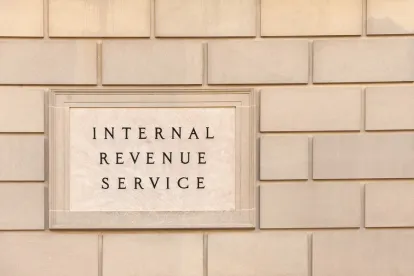The Internal Revenue Service has relaxed spousal notarization and plan representative witness requirements in 2020 for retirement plan elections in IRS Notice 2020-42. The notice addresses the physical presence requirement for notarization or witnessing of certain plan elections and provides temporary relief permitting remote notarization and witnessing subject to certain requirements.
For the period from January 1, 2020, through December 31, 2020, IRS Notice 2020-42 provides temporary relief from the physical presence requirement for any “participant election” witnessed by (i) a notary public of a state that permits remote electronic notarization, or (ii) a plan representative. A “participant election” includes any consent, election, request, agreement or communication made by or from a participant, beneficiary, alternate payee, or beneficiary.
However, this relief has particular requirements that must be met.
For an election required to be witnessed by a notary public, the physical presence requirement is deemed satisfied for an electronic system that uses remote notarization if executed via live-audio technology, provided that the system complies with state law requirements for notary publics.
For an election required to be witnessed by a retirement plan representative, the physical presence requirement is deemed satisfied for an electronic system if live audio-video technology is used that satisfies the following requirements:
-
The individual signing the election must present a valid photo ID to the plan representative during the live audio-video conference. The transmission of a copy of the photo ID before or after the witnessing is not sufficient.
-
The live audio-video conference must allow for direct interaction between the signing individual and the plan representative. A pre-recorded video of the person signing is not sufficient.
-
The signing individual must transmit by fax or email a legible copy of the signed document directly to the plan representative on the same date it was signed.
-
After receiving the signed document, the plan representative must (i) acknowledge that he or she has witnessed the signature under the requirements of this notice and (ii) transmit the signed document, including the acknowledgment, back to the individual under a system that satisfies the applicable notice requirements under Treasury Regulation § 1.401(a)-21(c) (which provides a safe harbor for electronic notices).
This relief from the personal presence requirement is temporary. It applies to elections such as COVID-19 distributions, spousal consent to distribution from a plan subject to qualified joint and survivor annuity (QJSA) requirements, retirement plan loan applications. The relief applies only to qualified retirement plan elections, and not to other types of benefits such as health and welfare plans.




 />i
/>i
